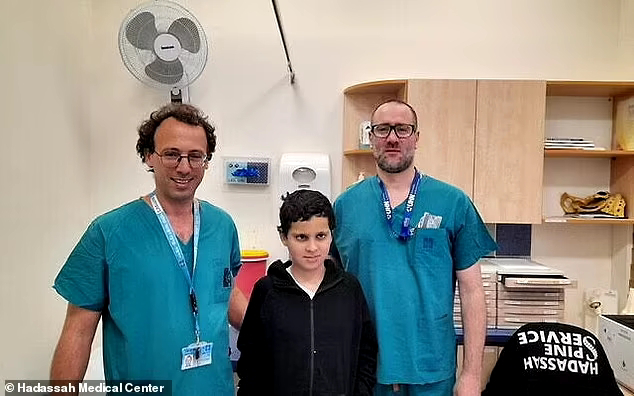Doctors re-attach boy's head after struck by a car while on his bike
According to Mail Online, twelve-year-old Palestinian Suleiman Hassan, from the West Bank, suffered an internal decapitation where the base of the skull and the top of the spine become detached, but the skin is still intact.
Doctors said Suleiman's head was 'almost completely detached from the base of his neck.' He underwent painstaking surgery carried out by an intensive care team that took several hours.
Suleiman was riding his bike when a car hit him. He was airlifted to Hadassah Ein Kerem’s Trauma Unit in Jerusalem and immediately put into surgery.
His injury was fixed in early June, but the Jerusalem hospital waited a month to announce the results.
The true incidence of internal decapitation is unknown as 70 percent of victims die instantly or en route to the hospital.
'We fought for the boy’s life,' Dr. Ohad Einav, one of the surgeons who operated on the patient, told The Times of Israel.
The surgery is only possible if major blood vessels are still intact, as blood flow to the brain must be preserved.
Dr. Marc Siegel, Clinical Professor of Medicine and a practicing internist at NYU Langone Medical Center and Fox News contributor, told Fox News Digital the surgery is 'amazing'.
Dr Einav said: 'The procedure itself is very complicated and took several hours. While in the operating room, we used new plates and fixations in the damaged area.
'Our ability to save the child was thanks to our knowledge and the most innovative technology in the operating room.'
After surgery, patients will go through rehabilitation to help them regain movement in the neck.
Suleiman has been discharged with a cervical splint, and doctors will continue to monitor his recovery.
He has no neurological deficits or sensory or motor dysfunction and can walk without help.
Suleiman's father, who did not leave his son's bedside during his recovery, said: 'I will thank you all my life for saving my dear only son. Bless you all.
'Thanks to you, he regained his life even when the odds were low and the danger was obvious. What saved him were professionalism, technology and quick decision-making by the trauma and orthopedics team. All I can say is a big thank you.'





Comments
Post a Comment